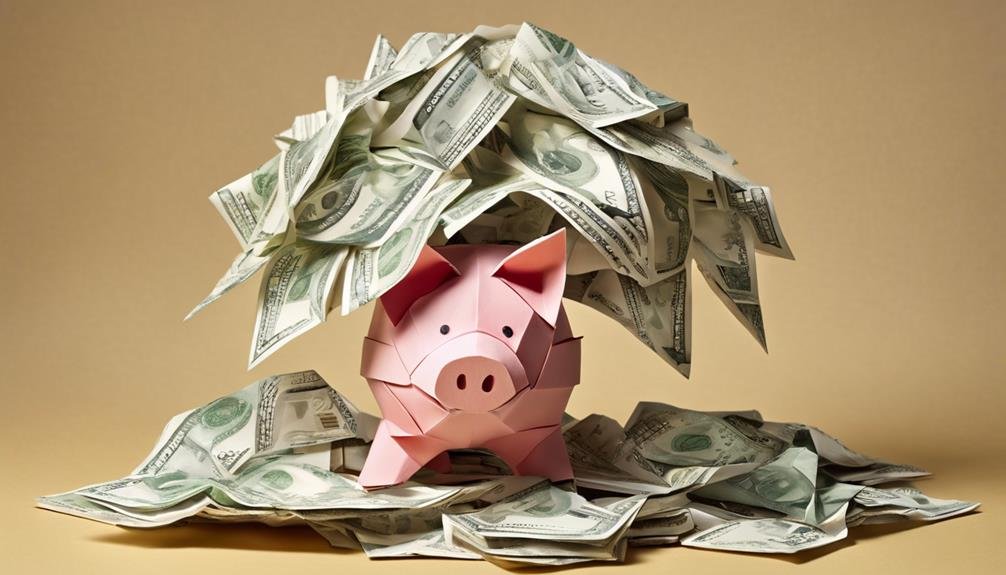What is the Dividend Snowball Effect?
A dividend Snowball Effect is an investing strategy where one reinvest their dividends back into the same stock in order to receive larger dividends in the future. The dividend snowball effect is the compounding effect of reinvesting dividends that allows investors to receive a larger number of shares, which leads to a larger dividend. Many investors who use this strategy focus on stocks that have a history of consistently paying high dividends, such as dividend aristocrats or dividend kings. Using dividends in this way allows investors to boost their dividend income with time. The current yield is not as important as the long-term dividend growth rates and the number of years to retirement.
How the dividend snowball effect works
When delving into the realm of dividend investing, you will encounter two main schools of thought. The first strategy, often considered traditional, is the buy-and-hold method which involves acquiring stocks that yield dividends and retaining them for an extended period. On the other hand, you have the more dynamic approach known as the dividend snowball effect, which emphasizes reinvesting dividends to amplify gains from your investments in dividend-paying stocks.
So, what makes the dividend snowball effect tick? The mechanism behind this strategy is straightforward: reinvest your dividends to purchase additional shares of stock. As you increase your ownership stake in a company, you subsequently earn more dividends. This cyclical process then enables you to reinvest a larger sum and compound your earnings over time.
If you’re contemplating implementing the dividend snowball strategy, there are several key factors to consider. Firstly, it’s crucial to ensure that the companies you choose for investment are reliable and boast a consistent track record of paying out steady dividends.

Steps for Dividend Reinvestment for dividend income when considering which dividend stock
Dividend reinvestment is an excellent way to grow your investment portfolio. By reinvesting your dividends, you are able to reinvest in more shares of stock, which can lead to increased dividend payments in the future. Here are a few steps to help you get started with dividend reinvestment, with a more complete guide available in a separate post:
1. Determine which stocks you would like to reinvest in. When choosing stocks for dividend growth investing, look for companies that have a history of paying out dividends and have shown consistent annual dividend increases. You might use some high-paying dividend stocks, like BDCs, as well as a mix of stocks with strong dividend growth rates.
2. Decide how much you would like to reinvest. You can reinvest all or a portion of your dividends.
3. Contact the company or brokerage firm that holds your stock and set up a dividend reinvestment plan. Some companies offer direct stock purchase plans that allow you to buy additional shares directly from the company without having to go through a broker.
4. Start reinvesting your dividends and watch your investment grow! As your dividends are reinvested, you will start to see your investment snowball, meaning that each subsequent dividend payment will be larger than the last as you own more shares of stock.
By following these steps, you can begin growing your investment portfolio through compound interest and dividend growth investing.
How to Implement The Dividend Snowball in Your Retirement Account to build wealth
To implement the dividend snowball in your retirement account, you’ll need to be an investor in stocks that pay dividends. The dividend snowball strategy is all about reinvesting your dividends to create a “snowball” effect. With this strategy, you reinvest your dividends back into the stock, which then pays you more dividends. This process repeats itself, creating a “snowball” of dividend payments that grows over time.
Initiating a journey towards financial growth involves creating a portfolio filled with dividend-paying stocks, setting the stage for the dividend snowball effect. You can cultivate such a portfolio by investing in companies known for their consistent dividend distributions and who are anticipated to maintain this trend. Upon establishing your portfolio of these dividend-rich stocks, you’re equipped to reinvest dividends, effectively pushing your personal dividend snowball into motion.
The principle of the dividend snowball effect truly manifests when you reincorporate your dividends back into your holdings. This action sets off a cascade that amplifies your returns, culminating in an increasingly substantial and resilient dividend snowball over time. The pinnacle of this strategy lies in using your dividends to procure additional shares of the same stock, subsequently boosting your stake in that company and paving the way for an expansive potential for future dividend payments.
Suppose you’re attracted to a retirement plan centered around generating passive income while concurrently augmenting your savings. In that case, harnessing the power of the dividend snowball effect could be an optimal approach. By judiciously investing in stocks that consistently yield dividends and faithfully reinvesting those dividends, you have the potential to construct a hefty portfolio capable of producing significant income during retirement.
Deciding to reinvest your dividends or not in your dividend snowball and ignoring the current dividend yield
Dividend reinvestment is the process of reinvesting dividends back into the company in order to receive more shares. This can be a good way to increase your ownership stake in the company and potentially earn more money in the future. However, it is important to remember that you are also taking on more risk by doing this. Before deciding to reinvest dividends, you should carefully consider your financial goals and risk tolerance.
Deciding whether to reinvest your dividends or not is an important part of dividend snowball effect. Dividend reinvestment can help you accelerate the growth of your snowball, but it also comes with some risks.
If you decide to reinvest your dividends, you’ll need to carefully consider how much you’re willing to invest. You don’t want to put all of your eggs in one basket, and diversifying your investments is always a good idea.
Reinvesting dividends can be a great way to grow your snowball, but you should always weigh the pros and cons before making any decisions.

Things to Consider Before Implementing a Dividend Snowball Strategy for passive income
Before you venture into the exhilarating world of the dividend snowball effect, it’s essential to ponder some key elements. Firstly, what are your major investment aspirations? Secondly, what’s your anticipated timeline for realizing these goals? Thirdly, are you ready to shoulder a certain level of risk? Fourthly, where do you currently stand – do you already own any stocks or have any dividends being reinvested? Fifthly, how much capital can you comfortably allocate towards dividend reinvestment each month? Lastly, do you possess other stocks in your portfolio that you’d consider selling off to invest more into a high-yielding dividend stock?
With these questions addressed and thoughtfully answered, it’s time to delve into how harnessing the dividend snowball effect could benefit your dividend snowball portfolio. The essence of this strategy is quite straightforward: take the dividends earned and feed them back into the stocks that initially dished them out. This cycle gradually expands your ownership stake and inflates your received dividends (the ‘snowball effect’). In due course, this strategy can lead to the compounding of returns as your dividends grow progressively larger.
When deciding whether to implement the dividend snowball effect as part of your financial growth strategy, several considerations come into play. Analyze overarching investment objectives alongside your projected timeline for achieving these goals; factor in how much risk is palatable for you. It’s also crucial to assess where you’re starting from – with respect to existing stock holdings or ongoing dividend reinvestment practices. And finally, deliberate on how much capital could feasibly be designated for monthly dividend reinvestment. Taking all these factors into account will help ascertain if adopting the dividend snowball effect aligns with your personal financial landscape.
Furthermore, you can use a combination of ETFs and preferred stocks to manage diversification and risks while maintaining higher yields.
1. No more than 5% in any one company in the dividend snowball
The Dividend Snowball Effect is an investing strategy that seeks to maximize returns by reinvesting dividends received from stocks in a portfolio. The strategy is simple: each time a dividend is received, the investor reinvests it in the stock that paid the dividend. Over time, as more and more dividends are reinvested, the “snowball” grows larger, resulting in greater returns.
There are a few things to keep in mind when investing and considering the Dividend Snowball effect. First, it is important to diversify one’s portfolio across different companies to minimize risk. Second, while it is important to reinvest dividends, one should not invest more than 5% of their total portfolio in any one company. By following these two guidelines, investors can maximize their returns while minimizing their risk.
If you are not careful and ignore this rule, a firm with a higher dividend yield will become unbalanced in your portfolio and increase your overall risk.
To find the best stocks for your portfolio, you should always consider all factors, such as valuation and risk.
2. No more than 20% in any one sector when using the dividend snowball
The dividend snowball is a great way to reinvest your dividends and grow your portfolio. However, you should never have more than 20% of your portfolio in any one sector. This will help you diversify your holdings and reduce your risk.

How the dividend snowball effect can help you
Dividend investing is a powerful tool that can help you build wealth over time. And the dividend snowball can be an especially helpful way to accelerate your progress.
Here’s how it works: As you reinvest your dividends, your number of shares grows. That, in turn, leads to even more dividends, which you can then reinvest. The result is a virtuous circle of investment growth. The long time frame is also suitable for those looking to plan for and invest so they can retire.
The key to making the dividend snowball work for you is to start early and be patient. By reinvesting your dividends over a long period of time, you can compound your returns and build significant wealth.
The pitfalls of the dividend snowball effect for dividend investing
Many people believe that dividend investing is a surefire way to retire rich. However, there are several pitfalls that investors should be aware of before they start down the dividend investing road.
One of the biggest dangers of dividend investing is that it can lead to complacency. When investors receive regular dividend payments, they may be tempted to sit back and let their investments ride, rather than actively monitoring them. This can be a recipe for disaster if the underlying investments start to decline in value.
Another pitfall of dividend investing is that it can create a false sense of security. Just because a company pays out dividends doesn’t mean that it’s a safe investment. In fact, some of the most volatile companies in the market are those that pay high dividends.
Lastly, investors need to remember that dividends are not guaranteed.
Conclusion: how the dividend snowball effect can help you compound your wealth
The dividend snowball effect presents multiple advantages that can significantly contribute to your financial growth. For starters, this strategy can aid in enlarging your portfolio over time and provide a safety net during economic downturns. By consistently reinvesting your dividends, you not only retain your existing shares but also acquire more, potentially cushioning the impact of market recessions.
Moreover, the dividend snowball effect plays a pivotal role in expanding your investment portfolio. The process of reinvesting dividends allows you to procure additional shares of stock, which in turn broadens your ownership stake in a company. This larger stake could translate into amplified profits in the future.
Diversification is yet another benefit offered by the dividend snowball effect. Reinvesting dividends doesn’t limit you to purchasing shares from the same company; you can also diversify by acquiring stocks from various companies. Such diversification can help mitigate risk and enhance portfolio stability by spreading investments across different sectors.
Harness the power of compounding today with the dividend snowball effect and boost your prospects for a comfortable retirement. Don’t be swayed by variations in stock price or get overly focused on current dividend yields. Instead, concentrate on building a robust portfolio primed for years of consistent dividend returns.
In conclusion, adopting the dividend snowball effect offers ample benefits: portfolio expansion, recession resilience, profit augmentation, and risk reduction through diversification. By focusing less on immediate gains like current stock price or initial yield and more on long-term steady growth via consecutive dividend payments, you set yourself up for sustainable financial success.

Dr. Lincoln C. Wood teaches at the University of Otago in New Zealand. He is an avid investor and educator. He loves cash flow, income, and dividends when investing. He likes to buy undervalued companies with strong advantages and earnings growth.







